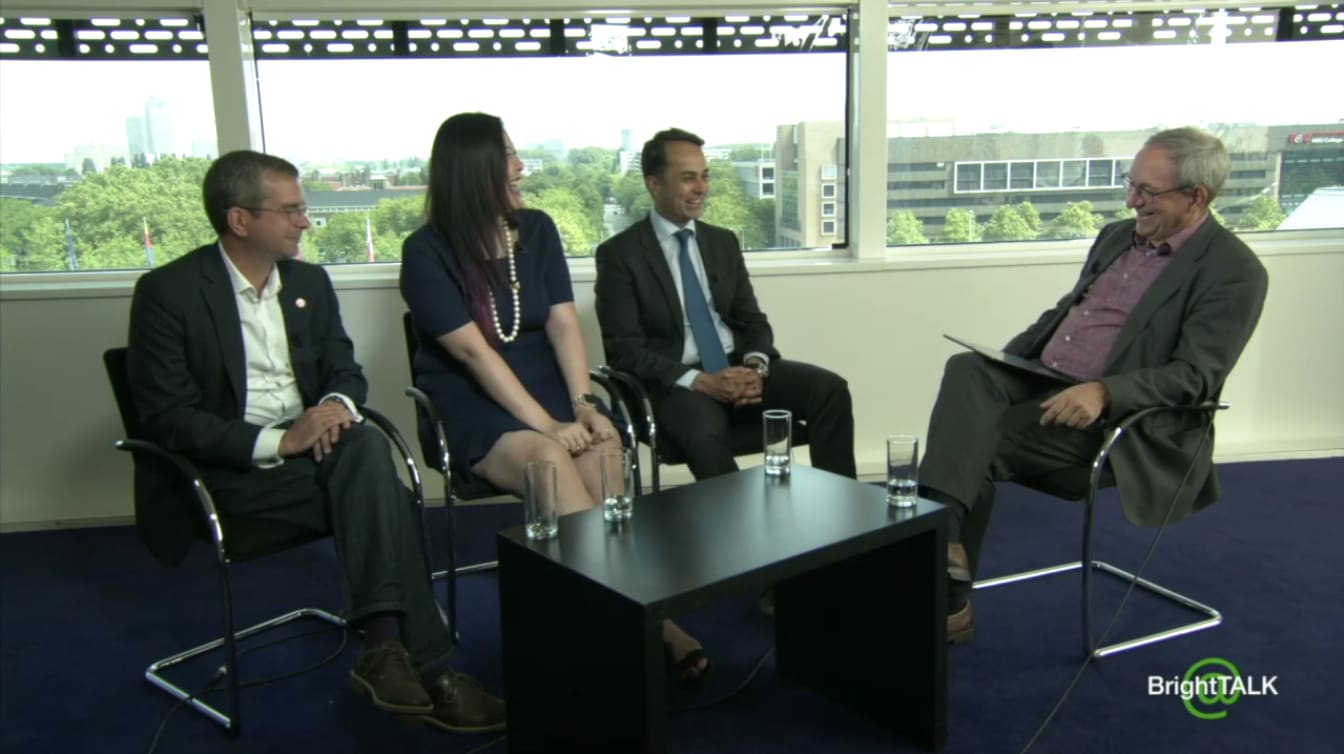Emerging Trends in Financial Services: IoT, AI and Blockchain
James Nunns
on 19 June 2018
Tags: AI , blockchain , cloud , IoT
How do financial services organisations evolve so that they are no longer seen as cumbersome Goliaths unable to keep up with the pace of change?
The answer has its roots at both an infrastructure level, where legacy technology is being replaced with something more akin to what is seen in challengers banks or in technology leaders from Silicon Valley, and in changing mentalities, where a new mindset can be just as important as the technology that’s adopted.
Of course, to say that this is simply a technological problem is naive, often, technology implementation is the easy part, with the larger challenge coming with organisational acceptance of the need to change.
Often, the case is that an organisation isn’t culturally ready for change, resulting in projects that fail and negatively impact the ability to evolve with an increasingly tumultuous market that is being impacted by regulatory changes and a technology revolution.
Mark Baker, Field Product Manager at Canonical, said: “We tend to find that the technology is the easy part once we’ve got the business aligned around a common goal with common sets of objectives and accepting of the change.”
However, once an organisation is culturally aligned around a common goal and is accepting of technological change, then it is possible to work with a technology partner like Canonical in order to deploying the technology simple.
Blockchain, AI & IoT
Blockchain, AI, and the Internet of Things are just some of the emerging trends impacting financial services but simply jumping to these technologies without identifying the problems it can solve may be just as damaging as not adopting.
Baker said: “Very often you need to highlight that this is a new technology, it’s blockchain technology it has the following capabilities of trust or whatever it may be and therefore some of the problems you identify within your organisation may be solved by this technology.”
Understanding both the technology and the customer pain points is invaluable when it comes to decision making, but there’s a third element that’s equally as important, Wincie Wong, RBS, said: “The third thing is the business case. Let’s also make sure there is some sort of return on being able to implement a better solution, because that needs to happen in order for a larger organisation like a bank to have the momentum to actually push things through.”
For more insights into emerging technologies and how they are impacting financial services watch the webinar by clicking the link below.
Speakers
- Mark Baker, Field Product Manager, Canonical
- Wincie Wong Digital Propositions Lead – Personal & Business Banking at Royal Bank of Scotland
- Vivek Bajaj Global Vice President, Watson Financial Services Solutions, Member Industry Academy at IBM
- John Erik Setsaas, Identity Architect at Signicat
Open source is what we do
We believe in the power of open source software. Besides driving projects like Ubuntu, we contribute staff, code and funding to many more.
Newsletter signup
Related posts
Edge Networking gets smarter: AI and 5G in action
Organizations everywhere are pushing AI and networks closer to the edge. With that expansion comes a challenge: how do you ensure reliable performance,...
Canonical and NVIDIA BlueField-4: a foundation for zero-trust high performance infrastructure
At NVIDIA GTC Washington D.C., Canonical is pleased to support the arrival of the NVIDIA BlueField-4 – the newest generation of the data processing unit (DPU)...
Join Canonical at the first-ever African OpenInfra Days
For the second time, and in less than one month, Canonical is coming to East Africa! Three weeks ago, we had the first-ever UbuCon Africa, which was...

